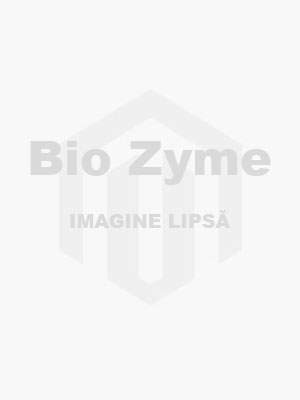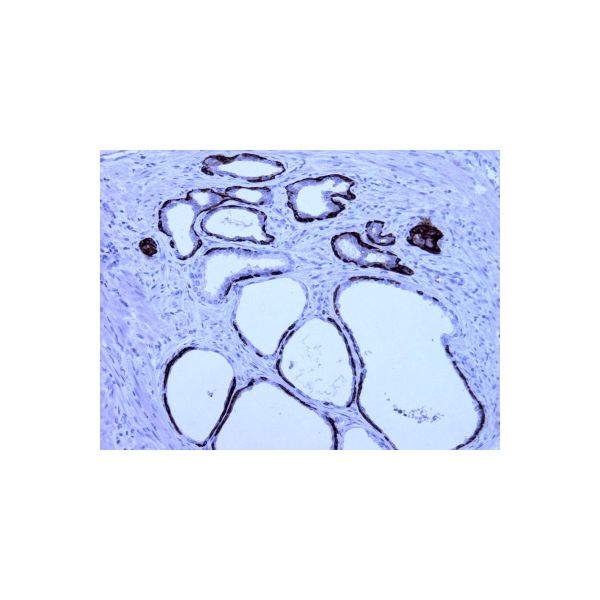Anti-Cytokeratin 5 (CK-HMW), mouse monoclonal, 1 ml, Species x-Reactivity: human, Applications: IHC
CK5 (CK-HMW)
Cat#: BSH-7123-100 100ul, BSH-7123-1 1ml, BSH-7123-RTU 7ml
Clone: BS42
S/R: human
Application: IHC
Tissue control: Esophagus, prostate
CK5 (keratin 5) is a member of the keratin gene family. Biochemically, most members of the CK family fall into one of two classes, type I (acidic polypeptides) and type II (basic polypeptides). The type II cytokeratins consist of basic or neutral proteins which are arranged in pairs of heterotypic keratin chains coexpressed during differentiation of simple and stratified epithelial tissues. This type II cytokeratin is specifically expressed in the basal layer of the epidermis with family member KRT14. The type II cytokeratins are clustered in a region of chromosome 12q12-q13. At least one member of the acidic family and one member of the basic family is expressed in all epithelial cells. Cytokeratin 5 is expressed in normal basal cells. Mutations of the Cytokeratin5 gene (KRT5) have been shown to result in the autosomal dominant disorderepidermolysis bullosa (EB). Defects in KRT5 are a cause of epidermolysis bullosa simplex.
 |
 |
| CK5 stained tissue sections. CK5 optibody (Clone: BS42) offers great signal to noise ratio using with 1:200 dilution and prostate basal cells stained strongly (a) anso lung squamous cell carcinoma stained intensively. | |
| Price | 2.970,00 RON (preturile sunt fara TVA) | ||||
|---|---|---|---|---|---|
| Description |
CK5 (CK-HMW) Cat#: BSH-7123-100 100ul, BSH-7123-1 1ml, BSH-7123-RTU 7ml CK5 (keratin 5) is a member of the keratin gene family. Biochemically, most members of the CK family fall into one of two classes, type I (acidic polypeptides) and type II (basic polypeptides). The type II cytokeratins consist of basic or neutral proteins which are arranged in pairs of heterotypic keratin chains coexpressed during differentiation of simple and stratified epithelial tissues. This type II cytokeratin is specifically expressed in the basal layer of the epidermis with family member KRT14. The type II cytokeratins are clustered in a region of chromosome 12q12-q13. At least one member of the acidic family and one member of the basic family is expressed in all epithelial cells. Cytokeratin 5 is expressed in normal basal cells. Mutations of the Cytokeratin5 gene (KRT5) have been shown to result in the autosomal dominant disorderepidermolysis bullosa (EB). Defects in KRT5 are a cause of epidermolysis bullosa simplex.
|
||||

 English
English




